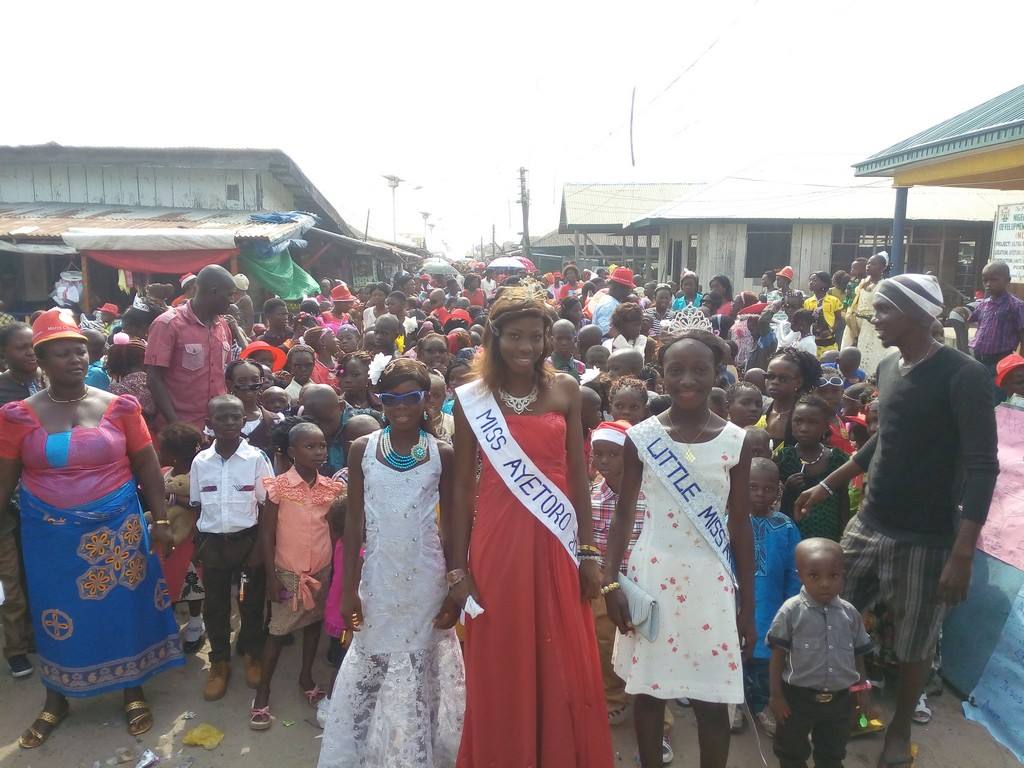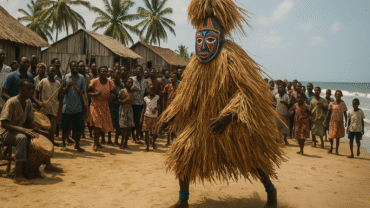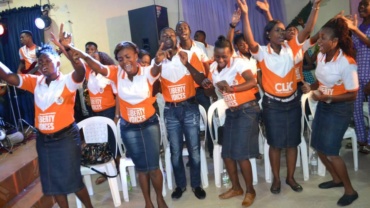In Aiyetoro, music was an essential element of communal life, and drumming in particular occupied a central role in both religious and social gatherings. During community feasts in the 1950s and 1960s, traditional drummers provided not only rhythm for dancing and celebration but also a cultural link between the Apostolic settlement and its Ilaje heritage. Their performances remain an enduring image of the Happy City’s ability to blend faith, tradition, and collective identity.
The community feast was typically organised to mark significant events — such as the installation of new leaders, harvest celebrations, or anniversaries of the settlement. On these occasions, food was prepared in abundance, hymns were sung, and the entire town gathered to reaffirm its unity. Central to the atmosphere of these feasts were the drummers, whose steady rhythms animated the crowd and gave form to the communal expression of joy.
Archival photographs capture these musicians seated in rows, their instruments fashioned from carved wood and animal skin. Some played the talking drum, whose tonal shifts echoed the cadence of Yoruba speech, while others struck larger drums to maintain the steady foundation of sound. The visual effect of white-garbed Apostles moving in time to the rhythm reinforced the symbolic blending of tradition and spirituality that characterised Aiyetoro’s identity.
Oral testimonies emphasise that drumming at community feasts was never regarded as mere entertainment. The beats carried symbolic meaning: they marked transitions during ceremonies, signalled the entrance of elders or leaders, and provided rhythm for collective hymns and dances. In this way, the drummers acted as custodians of cultural continuity, preserving the Ilaje musical heritage even as the community pursued a new spiritual vision through the Apostolic faith.
The performances also reinforced social cohesion. Drumming brought people together, inviting participation across age and gender. Women led call-and-response songs that complemented the rhythms, while children learned by imitation, clapping along or attempting to strike smaller drums. The feast thus became a site of intergenerational exchange, where music transmitted knowledge and strengthened bonds of belonging.

Visitors to Aiyetoro frequently remarked on the striking harmony between the solemnity of white garments and the vibrancy of the drumming. To many, the scene appeared paradoxical — a deeply religious community embracing traditional music with such enthusiasm. Yet to the Apostles, there was no contradiction. As elders explained, drumming at feasts was not an indulgence in worldly pleasure but an offering of rhythm and movement to God, a communal act of gratitude expressed through sound.
Though many of these feasts are now remembered only through photographs and oral accounts, their legacy remains significant. They illustrate how Aiyetoro, even in its pursuit of spiritual purity, remained grounded in cultural forms that connected it to its ancestral past. The traditional drummers of the community feast exemplify this synthesis: instruments of wood and skin producing rhythms that united a town, honoured its heritage, and elevated its joy into sacred celebration.




